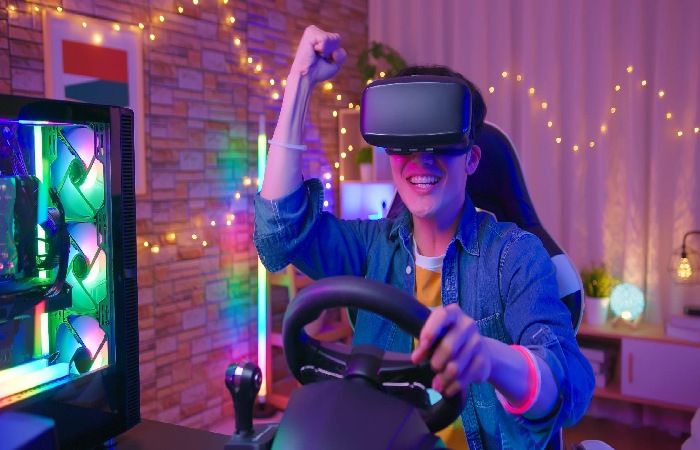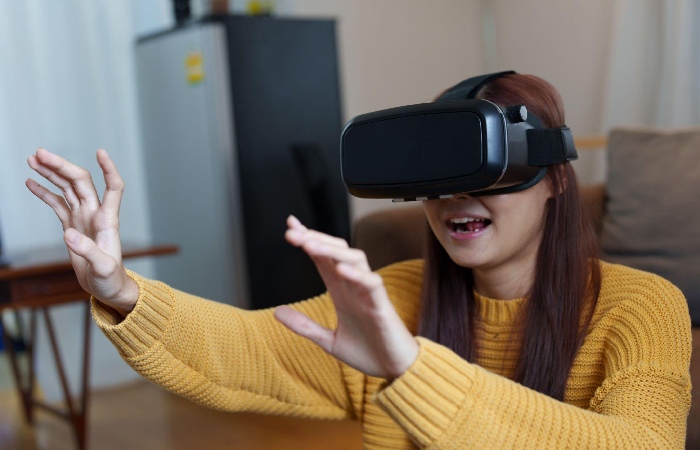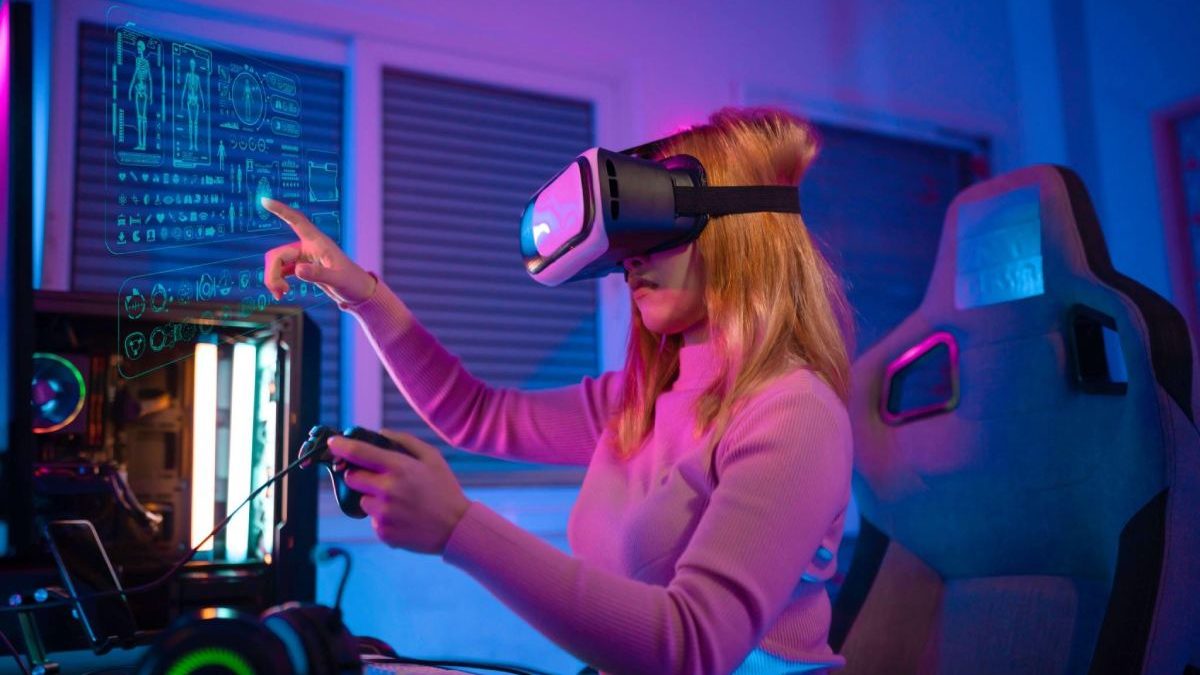Artificial intelligence (AI) has profoundly affected the world and the video gaming industry in particular. Thanks to AI, developers can now craft more immersive, captivating, and personalized games than ever before. In this article, we’ll look into how AI is revolutionizing video gaming and what this means for its future.
It’s also worth noting that the lottery industry has undergone dramatic transformations due to AI technology. Machine-learning algorithms are being utilized to optimize lottery sales and distribution, preventing fraudulence and ensuring fair play for all bettors. In addition, AI-powered chatbots are providing customer support via live chatbots that answer common questions quickly and accurately. With further advancements in this space, we expect even more creative uses of AI in the Maltese online lottery and around the world.

Table of Contents
How AI is changing the gaming industry?
AI-Powered NPCs
Non-Player Characters (NPCs) are an essential aspect of many video games, and AI has enabled creators to create NPCs that behave and interact more realistically with players. With AI, NPCs can learn from player actions and adjust accordingly, making for a more challenging and dynamic gameplay experience.
For instance, in “Middle-earth: Shadow of Mordor,” the Nemesis system utilizes AI to craft unique enemies that remember past encounters with the player and adjust their behaviour accordingly. This makes the game more captivating and provides players with a more immersive experience.
In addition, AI-powered chatbots are providing customer support via live chatbots that answer common questions quickly and accurately
Procedural Generation
Procedural Generation is a technique that uses algorithms to generate content on the spot. This enables game developers to craft expansive and varied game worlds without needing to handcraft every element themselves. Artificial intelligence (AI) can even be employed to create these algorithms, creating more intricate and captivating game worlds.
For instance, in “No Man’s Sky,” AI is employed to generate the vast, procedurally generated universe that contains billions of planets with unique flora, fauna, and environments. This makes the game more immersive and offers players endless exploration opportunities.
Customizable Gaming
AI can create personalized gameplay experiences, where the game adjusts according to a player’s skills, preferences, and play style. This creates a more engaging and satisfying experience for gamers as they feel like the game has been tailored specifically for them.
For instance, in “Left 4 Dead,” the AI Director system utilizes AI to adjust the difficulty and pace of the game based on player performance. So, if they’re struggling, the game will reduce the difficulty, while it will increase challenge levels if they’re doing well.
Enhancing Graphics
AI can be employed to enhance video game graphics through machine learning algorithms that alter textures, lighting effects, and other visual elements. This creates more believable and immersive game worlds while boosting performance on lower-end hardware.
For instance, in “Horizon Zero Dawn,” AI is utilized to enhance visuals by creating more realistic textures and lighting effects. This makes the game more immersive and visually stunning.
Realistic Physics
Realistic physics simulations in video games can make video games more immersive and engaging by providing dynamic gameplay. For instance, racing games benefit from realistic physics that makes cars feel responsive and realistic, giving players the feeling of driving a high-performance vehicle. Likewise, first-person shooters benefit from realistic physics that make weapons feel stronger and environments more interactive, giving gamers an authentic world experience.
The Revolutionizing Gaming experience with AI
AI is revolutionizing the gaming industry in numerous ways, impacting game development, player experience, and even the business side of gaming. Here are some of the significant ways AI is changing the gaming industry:
Non-Player Characters (NPCs)
AI allows game developers to create more realistic and intelligent NPCs. These characters can exhibit human-like behavior, react dynamically to player actions, and make independent decisions based on their virtual environment. AI-powered NPCs enhance the overall immersion and challenge of the game.
Procedural Content Generation (PCG)
AI techniques, such as machine learning and procedural generation, enable the creation of vast and diverse game worlds. Instead of relying solely on manual content creation, developers can use AI algorithms to generate landscapes, levels, quests, and other game elements automatically. This approach saves time and resources while offering unique and engaging experiences to players.
Adaptive Gameplay and Difficulty
AI algorithms can analyze player behavior and adjust the game difficulty dynamically. This adaptive gameplay ensures that players are consistently challenged, providing an optimal level of difficulty based on individual skill and progress. AI-powered systems can also customize content and storylines to suit a player’s preferences, making each gaming experience more personalized.
Natural Language Processing (NLP)
AI-powered chatbots and virtual assistants are being integrated into games to enhance player interactions. NLP enables players to communicate with in-game characters using natural language, expanding dialogue options and creating more immersive narratives. Virtual assistants can also provide real-time hints, tips, and information, enhancing the player’s overall experience.
Game Testing and Bug Detection
AI can automate the game testing process, significantly reducing the time and effort required for quality assurance. Machine learning algorithms can simulate player behavior, identify bugs, and provide feedback to developers.
Player Behavior Analysis
AI algorithms are majorly to analyze vast amounts of player data to gain insights into player behavior, preferences, and engagement patterns. Game companies can leverage this information to tailor their marketing strategies, develop targeted advertisements, and optimize game design based on player feedback. This data-driven approach improves player satisfaction and enhances the business side of the gaming industry.
Realistic Graphics and Physics
AI techniques like deep learning can enhance graphics rendering and improve physics simulations in games. AI-based algorithms can generate high-resolution textures, realistic lighting effects, and lifelike animations. This advancement in visual quality enhances immersion and realism, creating more visually stunning gaming experiences.
Game Design Assistance
AI can aid game designers by generating design suggestions, providing creative input, and assisting in balancing gameplay elements. By analyzing existing game data, AI algorithms can generate new ideas, refine game mechanics, and optimize the overall game design process. This collaboration between AI and human designers can lead to more innovative and engaging games.

Overall, AI is transforming the gaming industry by enabling more immersive experiences, improving game quality, personalizing gameplay, and enhancing the efficiency of game development processes. It opens up new possibilities for both game developers and players, making gaming more enjoyable and captivating.
FAQs
What is an example of AI in gaming?
One example of AI-powered physics simulations in video games is the “Euphoria” physics engine developed by NaturalMotion. This engine uses AI algorithms to simulate realistic character movements and interactions in games, such as realistic ragdoll physics, when a character is knocked down or thrown around.
Which AI tool is used in gaming?
The Modl:test AI tool has been specifically created to identify glitches, bugs, and performance issues that may impact a game’s launch. Another important aspect of game development is level design, particularly in match-3 games. It may require developers to play through a level multiple times, often up to 15 times, to ensure it meets release standards.
What is the future of AI in gaming?
Collaboration between human development teams and AI has led to achieving what was previously impossible. As the future unfolds, game developers are harnessing the power of AI to create advanced frameworks within video games. This includes the ability for characters to self-learn from their actions and evolve as the game progresses. With these advancements, we can expect to see games that can interpret and react to a player’s in-game activities, anticipate their next move, and adapt accordingly.

